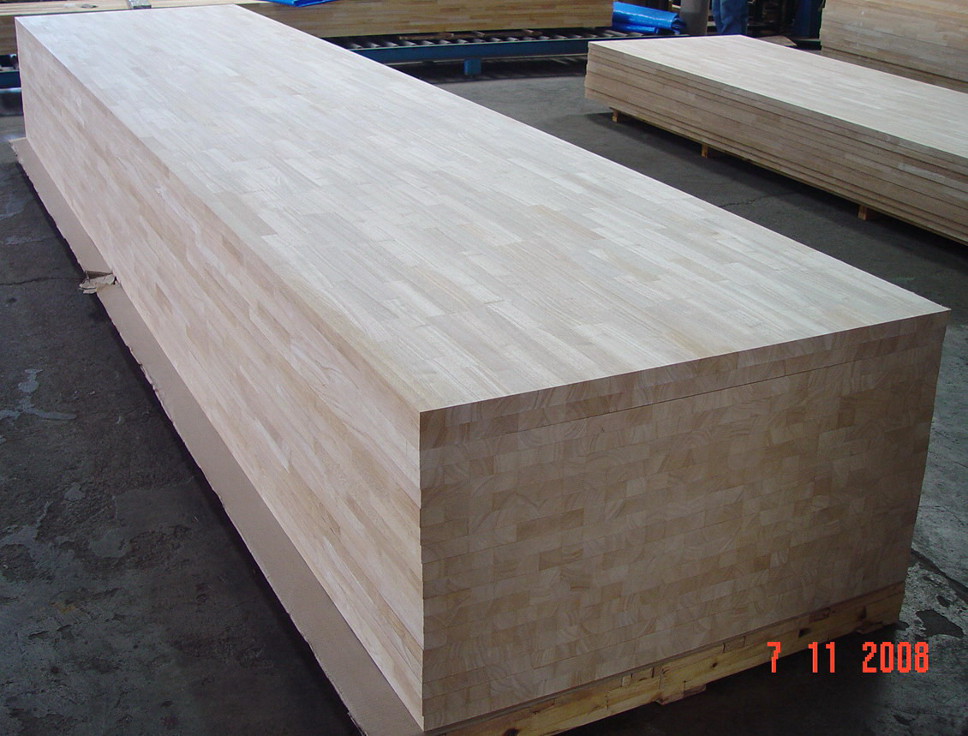You might have just heard about Rubberwood or been introduced to Rubberwood Furniture by somebody somewhere. You might have heard a thing or two about Rubberwood and you want to learn more about it.
Here are things you need to know about Rubberwood, how it became one of the most popular wood species in the world and what it is commonly used for.
What is Rubberwood?
Rubberwood is naturally light in color, as can be seen from the image here. It has a good medium-hard density making it suitable for many applications, especially for indoor use. What is even more enticing is that the price of Rubberwood is relatively cheaper than other comparable hardwood.
What Is Rubberwood Used For?
Rubberwood Solid and Board are commonly used to manufacture furniture like dining set, cabinet, table top, butcher block, bed frame, panel, facade, etc. Many other wood materials like Plywood, Particle Board and Medium Density Fiberboard (MDF) is manufactured using Rubberwood as their primary material. Nowadays you might even find Rubberwood Flooring on many professional basketball courts (FIBA certified).
Why Is Rubberwood Sustainable?
You need to understand that rubber trees are planted to produce latex which usually last for about 25 up to 30 years. When the latex production is already low, the old rubber trees will be felled and replanted with new trees. The wood from the old rubber trees felled are what you call Rubberwood. The planting, felling and replanting of rubber trees is a continuous cycle. Right from producing latex up until woodworking material at the end of their life cycle. This is why Rubberwood is sustainable.
Why Is Rubberwood Environmentally Friendly or Eco-Friendly?
As recent as in the 1980s, old rubber trees were felled, put in a pile and then burnt with flames. Can you imagine how hazardous and harmful this was to our environment? Fortunately, the usage of rubberwood put a stop to the practise of burning old rubber trees. This is why Rubberwood is environmentally friendly or eco-friendly.
Hendra Jap, founder of PT. Budi Tamora Permai, was one of the first few people in Indonesia who helped rubber plantations fell their old rubber trees and used them for woodworking purposes. In his words, “Back in the 80s, rubber plantations would gladly welcome us to fell and transport old rubber trees out of the plantation areas at very little cost. To them, rubber trees were just plantation “waste”. Almost everyone was into forest hardwood. Nobody was really looking at Rubberwood”.
The Rubberwood logs were transported and sold to only a couple of manufacturers as demand was low at that time. It was in 1993 that Hendra Jap founded PT. Budi Tamora Permai and started his sawmill operation in his hometown, Tanjung Morawa (short form “Tamora”), employing local workers.
For the next 3 years, as demand for Rubberwood Sawn Timber from manufacturers increased, BTP opened a few mobile sawmills in areas that were close to rubber plantations. At the same time, BTP’s main factory in Tanjung Morawa added Vacuum Pressure Tank, Steam Boiler and Kiln Drying Chambers. Installations were completed in 1996.
Then came 1998, arguably Indonesia’s darkest year since its independence in 1945. Political situation was at all time low, chaos and riots took place all over Indonesia. BTP’s main factory and mobile sawmills were not able to operate. Replanting projects had to be stopped as a safety precaution. A few of BTP’s heavy equipment working on site were damaged. Interest rate skyrocketed. Indonesian Rupiah (IDR) tanked. BTP suffered a big loss that year.
A year later, the recovery process began. At the turn of the Century, in the Year 2000, BTP installed its first Finger Joint Machine, Moulder, Rotary Compressor, Panel Saw and Wide-Belt Sander to manufacture Finger Joint Laminated Boards (FJLB). The end product at that time was Rubberwood Finger Joint Laminated Board, also known as Rubberwood Edge Glued Panel or Rubberwood Panel.
In 2001, BTP also invested in many other machineries to produce Rubberwood Furniture in 2001 to cater for domestic and international market. Dining Set, Book Shelf, Futon and Bunk Bed are amongst Knock-Down Rubberwood Furniture products that BTP manufactured. Most of the products were exported to Malaysia and The United States of America.
Up until this point, Rubberwood was the only wood species to ever be manufactured by BTP.
Merkusii Pine, also known as Sumatran Pine (Pinus in Indonesian language) became the second wood species BTP manufactured. Year 2003 marks the first time BTP entered Japanese market by exporting Pine Finger Joint Laminated Board.
To fulfill the large demand from Japan, BTP invested in Automatic Sawmills, Computer-Controlled Kiln Drying Chambers, Finger Joint Machines, Moulder, Rotary Compressor and Sander to double the production capacity. After a while, BTP was exporting both Pine and Rubberwood Board (FJLB) to Japan.
With the added capacity, BTP also exported Rubberwood Board (FJLB) to European countries, such as France, Germany and The Netherlands.
Continuous effort in promoting and exporting Rubberwood to the world, Indonesian Ministry of Industry and Trade in 2013 awarded PT. Budi Tamora Permai the prestigious Primaniyarta Award for the category of Superior Potential Exporter. Production capacity has tripled by then.
You can read more about the Interview Transcript of Hendra Jap (Founder & President Director of BTP) and Willie Martin (General Manager of BTP).
You can also learn more about PT. Budi Tamora Permai by Downloading The OFFICIAL PUBLICATION OF INDONESIAN MINISTRY OF TRADE 2014 here.
Although there were Merkusii Pine (Pinus in Indonesian), Teak (Jati in Indonesian) and other species throughout the years, Rubberwood remains the Primary Specialty and Expertise of PT. Budi Tamora Permai since its first day.
If You would like to enquire about the possibility of BTP supplying You with Rubberwood Finger Joint Laminated Board, Rubberwood Furniture, Rubberwood Flooring, Pine FJLB and Teak Flooring, Please get in touch with by clicking our Contact Form Here.



